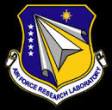AFRL posts BAA for MUSIENA program
 On September 21, the Air Force Research Laboratory posted a broad agency announcement for the Multi-Source Information Extraction & Network Analysis (MUSIENA) program (BAA-AFRL-RIK-2015-0019). For best consideration for FY18 funding, the agency recommends that white papers be submitted by March 3.
On September 21, the Air Force Research Laboratory posted a broad agency announcement for the Multi-Source Information Extraction & Network Analysis (MUSIENA) program (BAA-AFRL-RIK-2015-0019). For best consideration for FY18 funding, the agency recommends that white papers be submitted by March 3.
The Air Force Research Laboratory is soliciting white papers for various research and development analytics, analytical tools, algorithm developments, projects, and experiments focused on developing Multi-Source Information Extraction and Network Analysis (MUSIENA) capabilities that will provide the Air Force the means to better conduct analytical operations in support of their Intelligence, Surveillance, and Reconnaissance mission. This announcement is comprised of two projects, (1) Global Threat Discovery and Identification (GTD-ID) and (2) Emerging Threat Analytics (ETA) where each has research areas that taken together comprise the focus of MUSIENA research and development.
Past research in text analysis has led to the automated capabilities that are now in use to extract relevant information from large volumes of textual data. The development of this technology has reduced textual data overload, increased the accuracy of analysis, and decreased the cycle time and manpower requirements needed to assess threats and vulnerabilities. However, this is a situation that has not remained static from either the perspective of the anticipated number of data sources or projected analytical needs. Further development is required to not just keep pace but to move beyond current performance levels, to overcome limitations in moving to new data types and domains, and to achieve new, more sophisticated capabilities.
Fundamentally the analysis of textual content must produce higher levels of comprehension and understanding than presently exists. As textual information has increased in both quantity and complexity the demands for greater analytical capabilities have also grown dramatically. While basic documents still comprise a large portion of textual information, valuable content can now be extracted from a range of other sources including a variety of social media material (chat, email, blogs, etc), many open source materials and the metadata descriptors that relate back to additional media forms (video, imagery, speech, etc). The value of textual analysis going forward will now be gauged by the ability to work effectively in and across these and other components of a complex data environment while advancing the capabilities in exploiting traditional sources.Current network discovery and analysis science has focused on static relationship or event based networks of interest. This occurs primarily on one or two particular data sources. These capabilities are adept at enabling an analyst to effectively analyze network data within a single data source, but the analyst is then left to make mental correlations of observations and conclusions drawn from one data source to other data sources. Furthermore, current input methods do not account for semantic equivalences during the ingestion of the data, making the analyst’s job even more difficult.
One of the greatest technical challenges facing all decision support systems is the heterogeneous aspect of the data that is collected by millions of sensors and the different stovepipe architectures used to store this data. In order to perform useful analytics, a composite picture of the key entities, events, and locations need to be pieced together from the original disparate data sources. The ingesting and integrating of information from disparate data sources remains a difficult and unresolved problem.
The Information Directorate, Activity Based Analysis Branch, is soliciting white papers under this announcement for unique and innovative technologies to explore and develop Multi-Source Information Extraction and Network Analysis (MUSIENA) capabilities. The two projects under this MUSIENA program are (1) Global Threat Discovery and Identification (GTD-ID) and (2) Emerging Threat Analytics (ETA) with each containing the key focus areas for development.
Full information is available here.
Source: FedBizOpps







